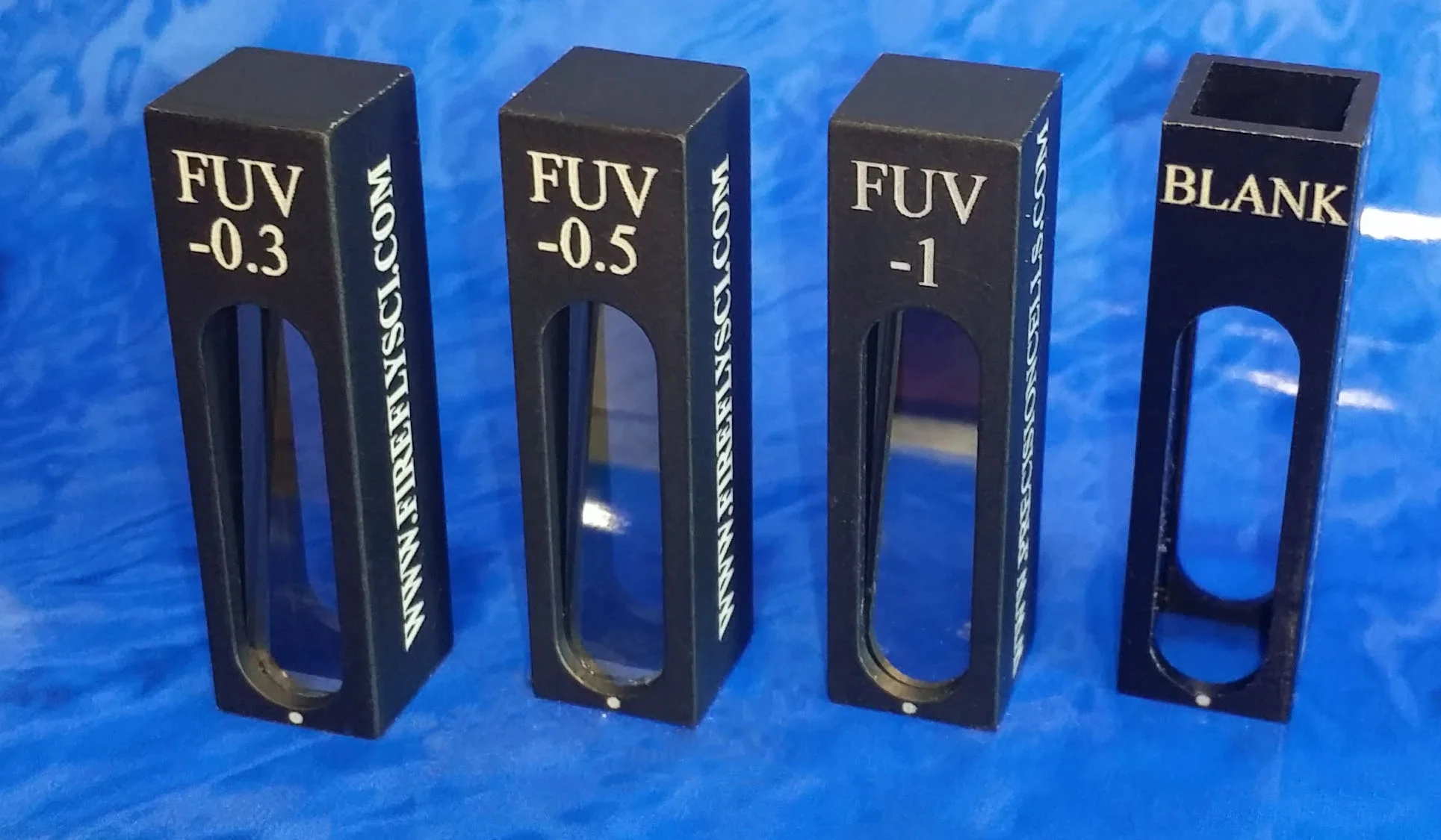Material Breakdown for All FireflySci Cuvettes
/Material Breakdown for All FireflySci Cuvettes
Hi again, everyone! We often get customers with specific questions about the material of our cuvettes such as thermal expansion rate, chemical compatibility,etc. As such, we've decided to compile a complete list of the materials that we use along with a complete detailing of their properties.
Optical Glass
Source: Knight Optical- http://www.knightoptical.co.uk
For what we call Optical Glass we use Schott B270, a versatile material that allows customers to use our cuvettes through the VIS and NIR range (340-2,500nm). B270 Ultra-White or Superwite, as it's called, is a crown glass that is produced through melting high purity raw materials. The end result is highly transmittant, flat glass that offers remarkable chemical stability.
Our most cost-effective material, B270 enables our customers a large amount of flexibility while working on a budget. Some of the other features include low acoustic attenuation of surface acoustic waves and the ability to fuse additional glass structures onto our Optical Glass cuvettes.
Our Optical Glass, Schott B270 cuvettes are easily identifiable through the "G", which we engrave on the upper right corner.
For a full rundown of the optical properties, including refractive indices, coefficient of thermal expansion and density, you can read further here: https://www.schott.com/en-ca/products/b-270-p1000313/technical-details
Pyrex Glass
Source: Esco Optics- http://www.escooptics.com
What we call "Pyrex" is actually Corning 7740. Customers often favor using Pyrex/Borofloat over Optical Glass due to its superior transmission, extreme flatness and weak fluorescence. On top of this, low thermal expansion enables the cells to be used at temperatures in excess of 450ºC for long periods at a time, giving it superior durability over B270. Add to this an expanded chemical resistance and it's a no-brainer for many customers, especially those who have us do custom work.
Transmission-wise, the Corning 7740 is a tad superior to Optical Glass with over 80% transmission between the wavelength range of 320-2,500nm.
Most of the time, however, customers go with Pyrex simply because it is the easiest material to fuse additional structures onto. Some typical add-ons include vacuum valves, graded seals and adapters. All BF33 cuvettes have a "P" designation on the upper-right corner.
To read more about the optical properties, go straight to the source here: http://www.quartz.com/pxprop.pdf
UV Quartz
UV Quartz (a.k.a. Suprasil 3001) transmission range of 190-2,500nm
What we refer to as UV Quartz is actually Suprasil 3001. Suprasil 3001 is an extremely high-purity, synthetic fused silica that combines a low thermal expansion coefficient and high chemical resistance to make it a far more durable choice than any of our glass materials.
With an operational wavelength range of 190-2,500nm, this is the go-to for work in the UV range but can be used all throughout the VIS and NIR as well. Suprasil is our most versatile material and can withstand some serious punishment and will only soften at over 1730ºC while the maximum recommended operational temperature is 1200ºC. Furthermore, you can even drop these cuvettes into the low Kelvins and this material will hold up in cryogenic applications as well. We even feature an entire line of cryogenic cuvettes made from Suprasil 3001 for both absorption and fluorescence.
Every Suprasil 3001/UV quartz cuvette is marked with "UV" on the upper-right corner.
To read more about the optical properties, check the following source: https://www.heraeus.com/media/media/hca/doc_hca/products_and_solutions_8/optics/Data_and_Properties_Optics_fused_silica_EN.pdf
IR Quartz
IR Quartz (A.K.A.Suprasil 300) Transmission range of 220-3,500nm
When it comes to dipping deeper into the NIR and even into the mid-IR range, Suprasil 300 is the material for the job. Suprasil 300 is manufactured by fusing quartz crystal in an electric vacuum furnace. The end product is a low-bubble, durable fused silica that enables optical transmission from 220-3,500nm.
Much more cost-effective than Calcium Fluoride or ZnS for Mid-IR work, Suprasil 300 IR Quartz is used mostly in high-grade spectrophotometers such as Cary or Agilent machines.
Every Suprasil 300 IR quartz cuvette is marked with "IR" on the upper-right corner.
To read more about the optical properties, check the following source: https://www.heraeus.com/media/media/hqs/doc_hqs/products_and_solutions_8/optics/Data_and_Properties_Optics_fused_silica_EN.pdf
Sapphire
Sapphire transmission range of 250-5,000nm
Sapphire is our most rarely used and most expensive material but it sure does pack a punch. With an enormous transmission range of 250-5,000nm and extreme resistance to scratching, heat, electrity and chemical corrosion this is far and away our most durable material.
Most people won't need something like sapphire but occasionally we have customers who want to build a flow cell or optical windows that can withstand extreme conditions or dip very far into the IR range.
This is a cutting edge technology and as the demand for sapphire optics increases, FireflySci is, in turn, increasing their technical capabilities.
Learn more about sapphire here on Schott's website: http://www.schott.com/advanced_optics/english/download/schott-sapphire-may-2013-eng.pdf
![firefly_logo_FINAL [Black].jpg](https://images.squarespace-cdn.com/content/v1/5411d5c0e4b02e1c8b27565a/1434491508803-XB4OF7YDY46Z72L5U5AP/firefly_logo_FINAL+%5BBlack%5D.jpg)






UV Disposable Cuvettes now available.